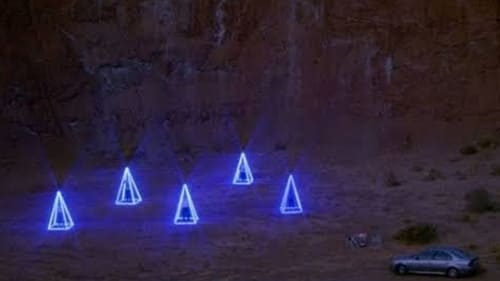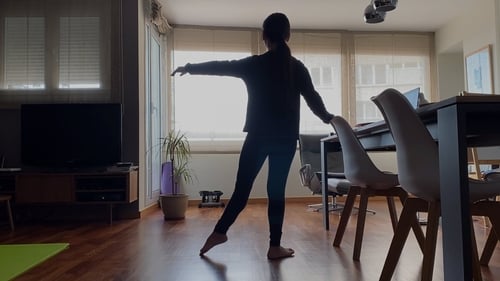Ion De Sosa
Nascimento : 1981-01-01, Donostia / San Sebastián, Spain
História
Ion De Sosa is a Spanish cinematographer, writer and filmmaker.

Director of Photography
Damián subsists on his meagre income, existing more than living. When he receives news that his father has died, he returns to Ferrol, his hometown, which he has stayed away from for over two decades. No sooner has he arrived than he finds himself the subject of mistaken identity and his fate is now entwined with another whose destiny is predetermined.

Executive Producer
José Manuel and the other members of the ufology association Ovni-Levante meet weekly to exchange information about extraterrestrial messages and abductions. Julio, their leader, dies unexpectedly, leaving José Manuel as the only person who knows about the cosmic secret that could alter the human future.

Director of Photography
José Manuel and the other members of the ufology association Ovni-Levante meet weekly to exchange information about extraterrestrial messages and abductions. Julio, their leader, dies unexpectedly, leaving José Manuel as the only person who knows about the cosmic secret that could alter the human future.

Cinematography
In her escape, M. takes refuge in an abandoned house. Amidst the echoing sounds resulting from her efforts to make herself comfortable, she hears some footsteps outside and decides to open the door. A fortuitous visitor, who will become her companion-in-shelter, steps into the house.

Director of Photography
Kenya, Africa, late 1920's. Baroness Karen Blixen, Danish writer known as Isak Dinesen and future author of the autobiographical novel Out of Africa, maintains a peculiar friendship with Farah Aden, her Somali servant; a seemingly impossible relationship that is born and fructifies thanks to respect and mutual understanding.

Madrid, Spain, March 2020. As the merciless disease that plagues the world spreads through the increasingly deserted streets of the city, people barricades themselves in their homes and move on with their lives…

Director of Photography
A year ago Andrea had a heart attack and was hospitalized. Together with several friends, Fernando began to send her audios from abroad, reading several fragments of books that could shorten that distance. Now, inverting the roles and with the camera, they both reconstruct those words under the same premise: a voice, a place in the city, a short reading.

Producer
The swimming pool has played an important role throughout film history – most often as a romping ground for the sophisticated and hedonistic Dolce Vita. But it can be so much more, even sinister, as in Sunset Boulevard. In Leyenda dorada a rather unglamorous swimming pool of diminished charm forms the focal point of the story. A lazy summer’s day in the Spanish village of Montánchez, and people of all ages enjoy themselves at the outdoor pool. It is an almost utopian depiction of community, under the lofty, watchful gaze of Our Lady of Consolation. While conflicts, aggression, rivalries and animosities have a siesta, the villagers take a well-deserved break. Formally, the film draws on the tradition of New Objectivity. But unlike Robert Siodmak’s Menschen am Sonntag (1930) and its lido sequence, this is a wee summer fairy tale.

Director of Photography
The swimming pool has played an important role throughout film history – most often as a romping ground for the sophisticated and hedonistic Dolce Vita. But it can be so much more, even sinister, as in Sunset Boulevard. In Leyenda dorada a rather unglamorous swimming pool of diminished charm forms the focal point of the story. A lazy summer’s day in the Spanish village of Montánchez, and people of all ages enjoy themselves at the outdoor pool. It is an almost utopian depiction of community, under the lofty, watchful gaze of Our Lady of Consolation. While conflicts, aggression, rivalries and animosities have a siesta, the villagers take a well-deserved break. Formally, the film draws on the tradition of New Objectivity. But unlike Robert Siodmak’s Menschen am Sonntag (1930) and its lido sequence, this is a wee summer fairy tale.

Editor
The swimming pool has played an important role throughout film history – most often as a romping ground for the sophisticated and hedonistic Dolce Vita. But it can be so much more, even sinister, as in Sunset Boulevard. In Leyenda dorada a rather unglamorous swimming pool of diminished charm forms the focal point of the story. A lazy summer’s day in the Spanish village of Montánchez, and people of all ages enjoy themselves at the outdoor pool. It is an almost utopian depiction of community, under the lofty, watchful gaze of Our Lady of Consolation. While conflicts, aggression, rivalries and animosities have a siesta, the villagers take a well-deserved break. Formally, the film draws on the tradition of New Objectivity. But unlike Robert Siodmak’s Menschen am Sonntag (1930) and its lido sequence, this is a wee summer fairy tale.

Director
The swimming pool has played an important role throughout film history – most often as a romping ground for the sophisticated and hedonistic Dolce Vita. But it can be so much more, even sinister, as in Sunset Boulevard. In Leyenda dorada a rather unglamorous swimming pool of diminished charm forms the focal point of the story. A lazy summer’s day in the Spanish village of Montánchez, and people of all ages enjoy themselves at the outdoor pool. It is an almost utopian depiction of community, under the lofty, watchful gaze of Our Lady of Consolation. While conflicts, aggression, rivalries and animosities have a siesta, the villagers take a well-deserved break. Formally, the film draws on the tradition of New Objectivity. But unlike Robert Siodmak’s Menschen am Sonntag (1930) and its lido sequence, this is a wee summer fairy tale.

Director of Photography
Saturday, April. Nice weather. The shadow of the mountain grows as evening falls. Five boys get ready for the night: they have booze, a car and music. No matter if the disco shut down years ago.

Producer
It is the year 2052, on Earth, in Spain, and the final days of almost everything. The city is a string of abandoned construction sites. Everyday there are fewer people and not all of them are human. A sheep costs four and a half million pesetas and you have to spend a lot of bullets to pay for one.

Director of Photography
It is the year 2052, on Earth, in Spain, and the final days of almost everything. The city is a string of abandoned construction sites. Everyday there are fewer people and not all of them are human. A sheep costs four and a half million pesetas and you have to spend a lot of bullets to pay for one.

Writer
It is the year 2052, on Earth, in Spain, and the final days of almost everything. The city is a string of abandoned construction sites. Everyday there are fewer people and not all of them are human. A sheep costs four and a half million pesetas and you have to spend a lot of bullets to pay for one.

Director
It is the year 2052, on Earth, in Spain, and the final days of almost everything. The city is a string of abandoned construction sites. Everyday there are fewer people and not all of them are human. A sheep costs four and a half million pesetas and you have to spend a lot of bullets to pay for one.

Director of Photography
Ion used to live in Berlin. He lived there with his girlfriend Marta. He had two cameras, a 16 mm one and a video tape one. Ion used to record everything in his little universe: his room, his friends, his girlfriend, the restaurant he used to work in, his tattoos and the city landscape. One day, though, Marta left him. Now, he shoots the same spaces, but without her presence. The house is empty. A personal portrait of a city and a separation.

Writer
Ion used to live in Berlin. He lived there with his girlfriend Marta. He had two cameras, a 16 mm one and a video tape one. Ion used to record everything in his little universe: his room, his friends, his girlfriend, the restaurant he used to work in, his tattoos and the city landscape. One day, though, Marta left him. Now, he shoots the same spaces, but without her presence. The house is empty. A personal portrait of a city and a separation.

Director
Ion used to live in Berlin. He lived there with his girlfriend Marta. He had two cameras, a 16 mm one and a video tape one. Ion used to record everything in his little universe: his room, his friends, his girlfriend, the restaurant he used to work in, his tattoos and the city landscape. One day, though, Marta left him. Now, he shoots the same spaces, but without her presence. The house is empty. A personal portrait of a city and a separation.

Ion used to live in Berlin. He lived there with his girlfriend Marta. He had two cameras, a 16 mm one and a video tape one. Ion used to record everything in his little universe: his room, his friends, his girlfriend, the restaurant he used to work in, his tattoos and the city landscape. One day, though, Marta left him. Now, he shoots the same spaces, but without her presence. The house is empty. A personal portrait of a city and a separation.



















